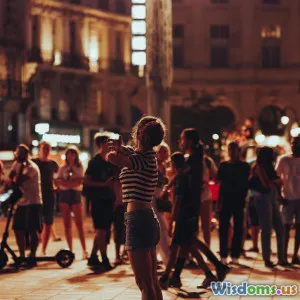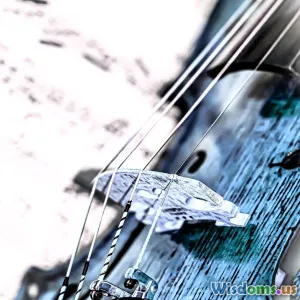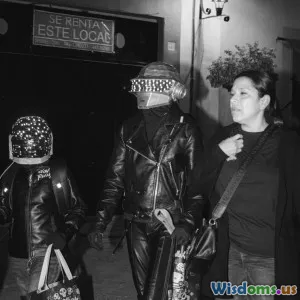
Can Cultural Dance Traditions Survive Modernization
8 min read Exploring the resilience of cultural dance amid rapid modernization worldwide. (0 Reviews)
Can Cultural Dance Traditions Survive Modernization?
Modernization is often synonymous with innovation, transformation, and progress. It brings technological advances, global connectivity, and societal shifts that reshape how we live, work, and communicate. However, one major question persists amid this whirlwind: can cultural dance traditions — timeless symbols of identity, history, and community — survive the sweeping tide of modernization?
Cultural dances are more than intricate steps or colorful costumes; they serve as living expressions of peoples’ roots, rituals, and shared experiences. This article ventures into the complexities of preserving these dances as our world accelerates, mixing scientific findings, field examples, and expert opinions to explore the future of cultural dance traditions.
The Significance of Cultural Dance Traditions
Before delving into survival challenges, it’s important to recognize why cultural dances matter. Anthropology and ethnomusicology experts argue that dance is a vital medium through which communities encode history, social values, and spiritual beliefs.
- Cultural identity: Traditional dances encapsulate a group’s origin stories, values, and collective memories. For example, the Maori Haka's vigorous movements articulate ancestral pride and warrior spirit, still vibrant in New Zealand.
- Social cohesion: Dances often mark life events and reinforce community bonds, making them essential social fabrics.
- Intangible heritage: The UNESCO Intangible Cultural Heritage list includes dances like the Spanish Flamenco and the Indonesian Saman, highlighting global recognition of their cultural value.
Thus, cultural dances carry profound importance — they are the living links bridging past, present, and future.
Modernization: A Double-Edged Sword for Tradition
Challenges Posed by Modern Lifestyles
As the world urbanizes and digitalizes, traditional ways of life transform drastically. Some stark challenges include:
-
Changing lifestyles and urban migration: Youth moving to cities often lose direct exposure to their native dance forms, as urban environments favor fast-paced, globalized entertainment over community rituals.
-
Commercialization and globalization: Markets flood with popular dance forms like hip-hop and K-pop, overshadowing localized traditions. Manufactured cultural tokens may reduce authentic dances into mere tourist spectacles.
-
Technology’s mixed influence: While streaming media spreads global dance forms, it can contribute to homogenization, pressuring dancers to conform to global trends rather than traditional styles.
The Risk of Cultural Erosion
Evidence shows some cultural dances face decline; for instance, "Jilala" trance dances in Moroccan rural areas struggle as younger generations favor electronic music over ritualistic performance.
UNESCO reports indicate numerous intangible cultural heritages are “endangered” or “critically endangered”, including various indigenous dance forms, highlighting the urgency to act.
How Cultural Dances Adapt and Thrive Amid Modernity
Despite challenges, many traditions survive and even flourish by dynamically interfacing with modernity rather than resisting it.
Fusion and Innovation
Many dance traditions evolve through fusion with contemporary styles, maintaining core cultural elements while appealing to modern audiences.
-
Example: Flamenco on the world stage has incorporated jazz elements, creating "Nuevo Flamenco," gaining international followers while honoring roots.
-
Case study: Bollywood dance seamlessly melds classical Indian dance forms like Bharatanatyam with Western pop influences, sustaining heritage through popular culture.
Digital Preservation and Platforms
Efforts to digitally archive and share traditional dances have benefited preservation.
-
Example: The Smithsonian Folkways Recordings initiatives include video documentation and tutorials, enabling global access.
-
Social media trends: TikTok amplifies exposure of cultural dances, though with risks of oversimplification, it enhances visibility crucial for sustainability.
Institutional Support and Education
Countries and NGOs increasingly recognize the value of cultural dance, embedding it in educational curricula and funding community programs.
-
Vietnamese government initiatives promote classical folk dances in schools, blending tradition with formal education.
-
Organizations like the International Dance Council (CID) advocate for ICT cultural dance preservation with workshops and community engagements.
Community Leadership and Intergenerational Transmission
Ultimately, the custodians of tradition decide its future.
-
Active elders and influencers mentor youth, ensuring knowledge continuity.
-
Cultural festivals and ceremonies intentionally include dance participation to embed experiences deeply.
-
Preservation tends to succeed when dances retain meaningful purposes beyond performance — as vehicles of identity rather than mere entertainment.
Real-World Insights: Success and Failure Stories
Endangered but Revived: The Hawaiian Hula
Hula was once suppressed during American colonization. Today, concerted efforts from native communities combined with educational programs led to a strong renaissance, with Hula now symbolizing cultural pride and resilience globally.
Lost Traditions: Some Native American Dances
Certain indigenous dance forms have been irretrievably lost or weakened due to displacement, assimilation policies, and language extinction — underscoring that preservation is urgent and complex.
Adaptation Model: The Brazilian Samba
Samba evolved from African roots and took new urban forms in Rio de Janeiro, becoming a vibrant cultural export. Its adaptability shows how integration into societal mainstreams can promote survival without erasing origins.
Conclusion: The Future of Cultural Dance Traditions
Cultural dance traditions undeniably face formidable challenges posed by modernization. Yet, these challenges are not inevitably death sentences. Through adaptive innovation, institutional support, digital technology, and committed community stewardship, these art forms can thrive.
Rather than viewing modernization as an enemy, embracing its possibilities while safeguarding cultural vibrancy offers the most hopeful path. Dance is alive — embedded in human creativity and collective memory — making its endurance probable if meaning and transmission remain central.
For scholars, practitioners, and culture lovers alike, the call is clear: cherish, document, innovate, educate, and participate in these timeless dances. In doing so, we hold hands across time, ensuring culture’s heartbeat continues amid all change.
References:
- UNESCO Intangible Cultural Heritage - https://ich.unesco.org/
- Brown, David. Dance and Modernity: Theory and Cultural Heritage. Journal of Cultural Research, 2021.
- Smithsonian Folkways Recordings - https://folkways.si.edu/
- International Dance Council (CID) - https://www.cid-portal.org/
- Feldman, Seth. “Modernization and Indigenous Performance Arts.” Cultural Survival Quarterly, 2019.
- King, Anthony. The Death of Dance? Preservation Challenges in Globalizing World, 2022.
Rate the Post
User Reviews
Popular Posts
















